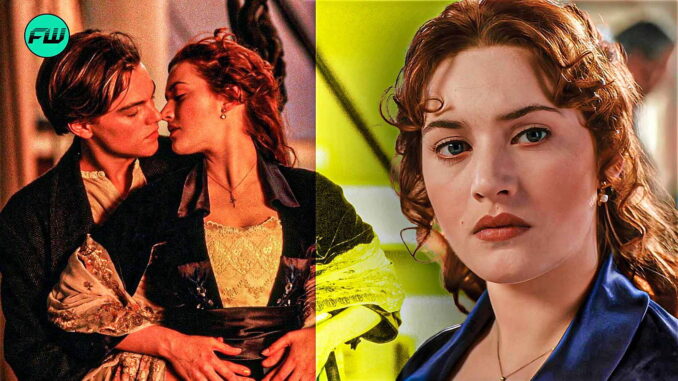
The legend of Titanic is etched not only in the grand, tragic scale of its narrative but also in the monumental, often punishing, effort that brought it to life. Beneath the surface glamour of an epic romance and groundbreaking visual effects, lay a grittier truth: a grueling production that pushed its cast and crew to their absolute limits. Few embodied this struggle as starkly as its young leading lady, Kate Winslet, whose commitment to authenticity led her to face the icy depths of a man-made ocean without the protective embrace of a wetsuit, enduring a serious health struggle that became as much a part of the film's lore as its iconic love story.
From the outset, James Cameron’s vision for Titanic was uncompromising. This wasn’t just a film; it was an attempt to resurrect history, to make an audience feel the biting cold, the panic, the sheer terror of a sinking ship. To achieve this, much of the filming took place in a vast, inky tank, simulating the frigid North Atlantic waters. While many crew members and extras wore wetsuits beneath their period costumes – a practical concession to human physiology – Kate Winslet made a conscious, albeit perilous, artistic choice. She refused the wetsuit.
Her rationale was rooted in a stubborn artistic integrity. How could she convincingly portray a woman facing hypothermia and the stark reality of impending death if she herself was comfortably warm? She didn't want the added bulk of a wetsuit to compromise the lines of her Edwardian gowns, nor did she want a barrier between her body and the sensory experience of Rose DeWitt Bukater. She wanted to feel the cold, to channel that genuine discomfort into her performance, believing that authenticity was paramount. It was a silent, personal oath to the character, an unseen armor of vulnerability.
This decision, born of conviction, soon began to exact a heavy toll. As days bled into weeks, Winslet spent countless hours submerged in the 50-degree Fahrenheit water, often for night shoots under massive lights designed to mimic moonlight. Her skin took on a deathly pallor, her lips turned blue, and her teeth chattered uncontrollably between takes. The insidious creep of hypothermia became a constant companion. Shivers that rattled her very bones, a profound, bone-deep ache, and a pervasive exhaustion became her new normal. She was not just acting; her body was genuinely reacting to the brutal conditions.
The struggle escalated beyond mere discomfort. Winslet contracted a severe case of influenza, which quickly morphed into pneumonia. Her immune system, battered by the relentless cold, was unable to fight off the infection effectively. There were days she simply couldn't film, forcing production delays and prompting concerned whispers among the crew. Medical teams were constantly on standby, monitoring her condition, offering whatever relief they could. She would emerge from the tank, trembling and shivering, wrapped in layers of blankets, only to be plunged back in for the next shot. The gruelling dance between art and survival became her daily reality.
Beyond the physical ravages, there was a profound mental and emotional toll. The constant cold, the exhaustion, the pain – it wore down her spirit. There were moments of frustration, tears, and a feeling of being pushed to the very brink. Yet, through it all, Winslet persevered. She knew the magnitude of the project, the expectations, and her own commitment to the role. That fierce determination, that refusal to yield, became intertwined with Rose’s own struggle for survival, blurring the lines between actress and character.
Was it worth it? The answer, like the film itself, is complex. The health struggle Winslet endured was serious, arguably reckless, and certainly pushed the boundaries of actor welfare. Yet, it is undeniable that her unflinching portrayal of Rose, imbued with a raw, visceral truth, owes something to that suffering. When Rose gasps for air in the frigid water, when her face contorts in pain and fear, when her body shivers uncontrollably – the audience feels it. They feel it because Kate Winslet felt it. Her pain became our conduit to the tragedy, making Rose's journey utterly believable, her will to survive intensely palpable.
Kate Winslet’s serious health struggle on the set of Titanic, born from her refusal of a wetsuit, stands as a chilling testament to the extreme lengths artists sometimes go to achieve realism. It’s a stark reminder of the sacrifices made in the pursuit of cinematic excellence, an indelible mark left not just on her body, but on the enduring legend of one of the greatest films ever made. Her dedication, however harrowing, ultimately contributed to the authenticity that makes Titanic resonate so deeply, proving that sometimes, true art demands not just sweat and tears, but also the bone-deep chill of genuine suffering.
